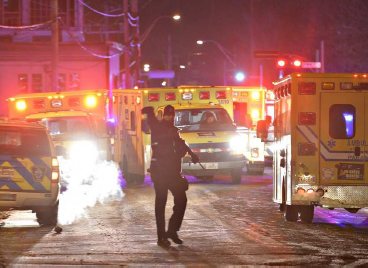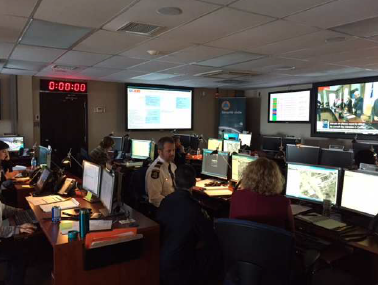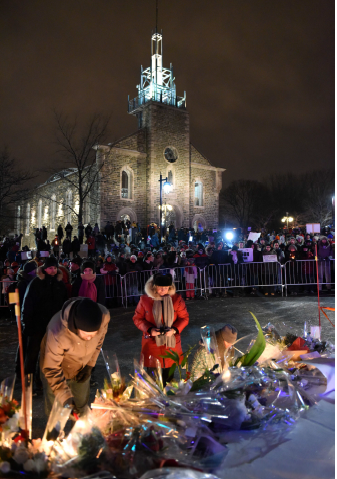
Active Shooter Recovery Plan
Context
On Sunday, January 29, 2017, a shooter broke into Centre culturel islamique de Québec in QuébecCity, killing six people and wounding five more, some seriously. Some 35 people witnessed the incident.
The emergency response was immediate, neutralizing the threat within minutes. Municipal authorities managed the situation on a “continuum” characteristic with this type of situation: immediate response, short-term response, succession and finally, mid- and long-term response. The recovery plan is part of the long-term response.
Mission and objectives
The recovery plan following the shooting of January 29, 2017 is a planning document that sets out priority actions to take in order to get things back to normal for the centre’s community and the entire population. Its objectives are:
1. To take an inventory of damages and economic impacts, particularly indirect economic losses and initially invisible effects that would emerge after a few months.
2. To use the urban safety governance structure to establish a direction and coordinate efforts while maintaining equilibrium between community initiatives and the organization’s needs (emotional and rational).
3. To separate current municipal operations from recovery activities to keep the former from interfering with the latter.
4. To segment recovery into sectorial plans to maximize opportunities (economics, including tourism; safety and feeling safe; living together; health; memorials, communications and resilience).
The recovery plan and its sectorial plans must:
- Base recovery on the population’s well-being and make human beings a priority.
- Create a recovery structure in parallel to ongoing municipal operations.
- Define and divide responsibilities and the phases of the recovery plan while maintaining a central coordination structure to coordinate, collaborate, communicate and make accountable
- Plan how to use momentum and initiatives that come directly from the community, and create an impact from quick and successful initial action.
- Facilitate economic recovery, encourage innovation and collaborate instead of obstructing.
- Make as many decisions as possible locally; authorizing and coordinating rather than deciding and imposing.
- Restore an urban dynamic life (culture, sports, recreation, business) and make the city feel safe again.
- Make the resilience shown after the disaster part of the collective identity; integrate the event.
Implementation
The recovery plan was segmented into sectorial plans prior to implementation: economic (including tourism), safety and feeling safe, living together, health, memorials, communications and resilience. These sectorial plans represent the issues that were identified for recovery.





